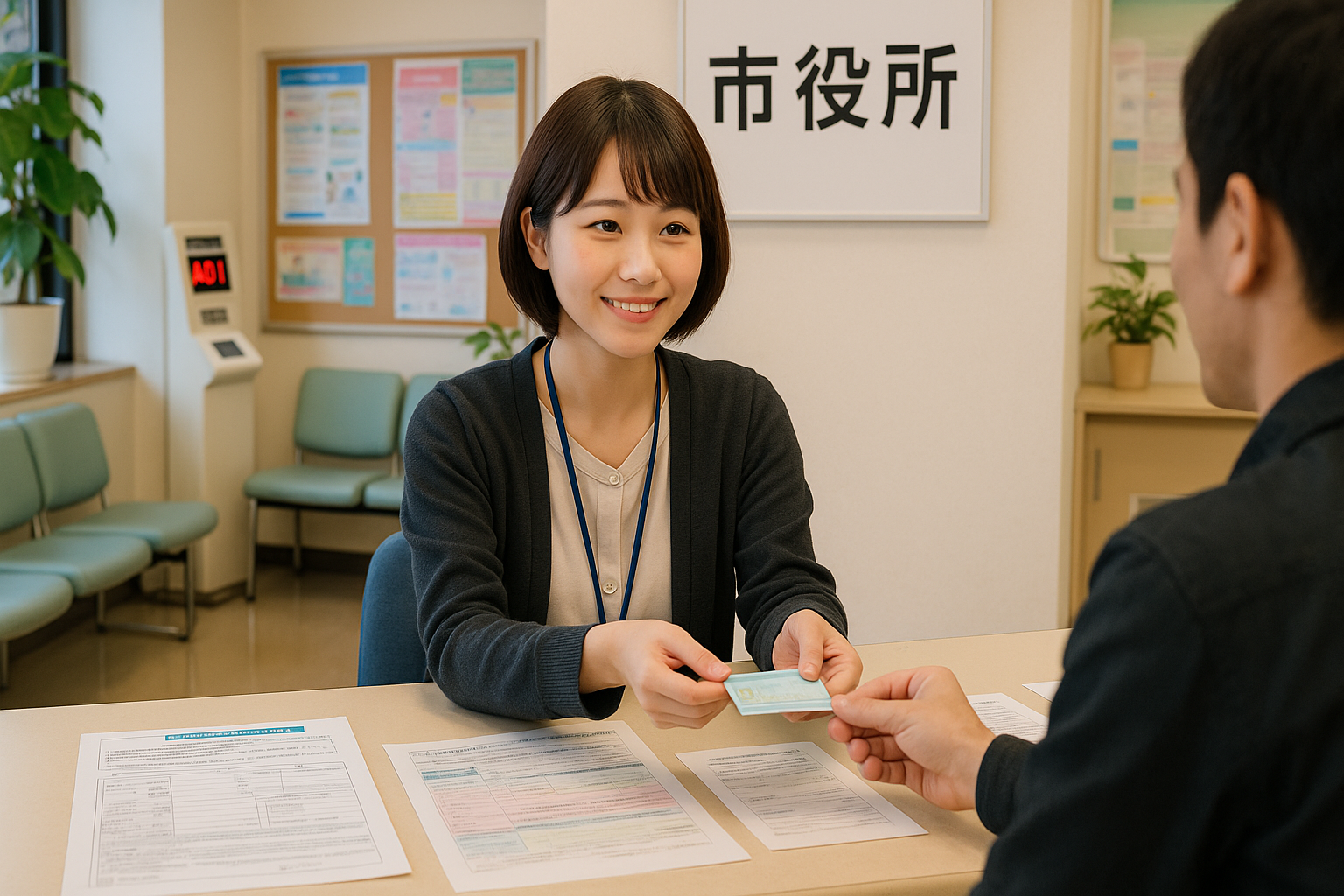Introduction
Moving to Japan is exciting—but your daily life won’t really start until you register your address. Without this first step, you can’t join health insurance, open a bank account, sign a phone contract, or receive official letters.
This guide shows what it is, where to go, what to bring, and exactly what happens at the counter—so you can finish in one visit without stress.
What is Resident Registration?
Resident registration means officially notifying your city or ward office of your current address. In Japan, all residents with a stay of more than 3 months are legally required to do this within 14 days of moving in.
After registration, you will receive a Resident Record (住民票 / Juminhyo), which proves your address and household information. You’ll need it to:
- Join health insurance or pension
- Open a bank account
- Sign a mobile phone contract
- File taxes or receive official letters
💡 In short: your life in Japan doesn’t really “start” until this is done.
Where to Go & What It’s Called
Go to your local City or Ward Office (市役所 / 区役所), usually the Residents Section (市民課).
You will file one of the following:
- Moving in from abroad or from another municipality in Japan: 転入届 (Tennyu Todoke)
- Moving within the same city/ward: 転居届 (Tenkyo Todoke)
💡 Note: These forms are available directly at the Residents Section, so you don’t need to prepare them in advance—just ask for 転入届 / 転居届 when you arrive.
What to bring (checklist)
Required:
- Residence Card (在留カード)
- Passport
- Lease/contract (if available; at least have your full address, including room number)
If you have:
- Move-out slip (転出証明書) if you moved from another city/ward in Japan
- Student ID (if you are a student)
- Family members’ documents (register together so your household is set correctly)
💡 Registration is free. Copies of your Resident Record usually cost about ¥300 each—get a few if you’ll open a bank account or phone contract next.
Step-by-step at the counter
- Take a number at the Residents Section.
- Say: 「転入届を提出したいです」 / I’d like to submit a move-in notification.
- Fill out the form (転入届 / 転居届 as applicable): full name (as on Residence Card), birthdate, nationality, new address incl. room number, move-in date, head of household & relationship.
- Show your Residence Card & passport (staff may copy them).
- Staff updates your records and may write your new address on the back of your Residence Card.
- Request Resident Record copies if needed for banking/phone.
- Staff may direct you to the Health Insurance & Pension counters—finish these while you’re there.
👉 Read more: Health Insurance and Pension in Japan↗
Processing Time (What to Expect)
- Typical counter time: ~30–60 minutes once you’re served.
- Busy periods: month-end, Mondays, and April (new school/fiscal year) can take 1–2 hours+.
💡 Go early in the morning and bring all documents to avoid repeat visits.
Who Must Go in Person?
- You (the resident) should go in person.
- Families should register together so the household (世帯) information is recorded correctly.
- A proxy may be allowed with a letter of authorization, but rules vary—going in person is fastest.
Common Mistakes (to Avoid)
- Missing room number in the address
- Name spelling different from your Residence Card
- Wrong move-in date (use the actual day you started living there)
- No address proof (bring your lease/contract)
- Visiting peak times only → go early to reduce waiting
After Registration: What’s Next?
- My Number (マイナンバー): arrives by mail; required for work, taxes, and some banking.
👉 Read more: Understanding My Number in Japan↗
- Health Insurance & Pension: enrollment is mandatory—do it right away.
👉 Read more: Health Insurance and Pension in Japan↗
Conclusion
Register within 14 days, bring the right documents, and—if possible—complete health insurance & pension on the same day. Once registered, everything else (banking, phone, taxes) becomes much smoother.
👉 Back to Living and Working in Japan: First Steps↗
Note: This article is written for foreigners living in Japan or planning to move to Japan. Conditions and requirements may vary depending on individual circumstances.




